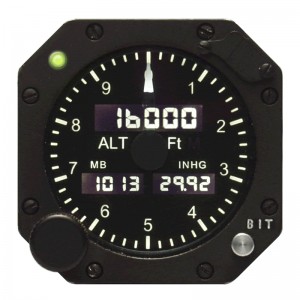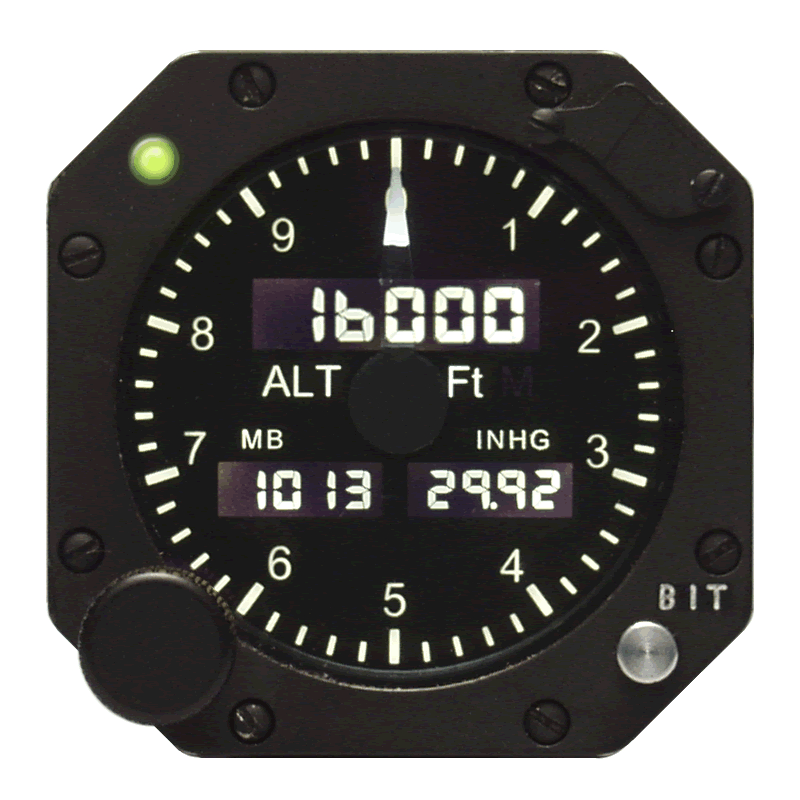By S. Clayton Moore

Receiving FAA approval for its new digital altimeter has given Aerosonic access to a new market for digital cockpit devices.
One the world’s leading suppliers of mechanical cockpit instruments is entering the digital age with its new product offering. Aerosonic Corporation of Clearwater, Fla., has received technical standard order approval from the Federal Aviation Administration for their new digital altimeter.
Aerosonic has long been a provider of instruments, producing a full line of two-inch and three-inch mechanical and electro-mechanical flight instruments including altimeters, airspeed indicators, vertical speed indicators and aircraft clocks. However, this has been the company’s first venture into producing digital instruments.
“Our standard altimeter is still a very good product but it’s purely a mechanical device,” said Mark Perkins, executive vice president of Aerosonic. “It’s the same product that we’ve built for 50 years that measures altitude up to 70,000 feet. In the new aircraft, the requirements for reliability, accuracy and performance have tightened up to the point where it’s sometimes difficult for a mechanical device to meet those criteria.”
The new digital altimeter significantly reduces lead time for production at Aerosonic, allowing the company to sell it for approximately the same price as its standard altimeters. The device retails from $6,000 to $8,000, depending on selected features.
“For us, it’s a less labor-intensive product because we ship in a lot of the parts; the assembly time is less but the content of the parts is more expensive,” Perkins explained.
The new altimeter has been designed to withstand 12,000 hours mean time between failures, a significantly longer lifespan than traditional products.
“It’s comparable in price to the customer but it has a much higher reliability,” Perkins said. “It’s a more cost-effective standby instrument in terms of the cost of ownership.”
Perkins also said the new altimeter will interface seamlessly with both older cockpits and the newer and technologically advanced glass cockpit displays.
“It’s a plug-and-play standalone altimeter that can be replaced simply by changing the connector on the back,” he said. “One of the things you don’t want to see is a big difference between a mechanical device and the glass device it’s supposed to be the standby for. When you go to the digital altimeter, it will track right on target with the glass display.”
Aerosonic scored a big hit for the new device when Cessna selected it as standard equipment on the new Citation Mustang. Cessna had significant input in the device’s design and specifications. It’s also being test-flown by Adam Aircraft in consideration for their A700 aircraft.
“With Cessna being the king of the business jet world, we’re extremely pleased to be onboard this particular aircraft,” Perkins said. “A lot of the development cycle was done with Cessna’s help, which has benefited us a lot. We’ve been very happy with the cooperative relationship we’ve had with Cessna.”
Aerosonic has been showing off the new device at air shows and conventions around the country. The digital altimeter is the first product in what the company intends to be a whole line of digital devices.
“We’ve had tremendous response in these early stages and we’re really looking forward to it being a significant part of our product line as we go forward,” Perkins said. “It’s really a launch for new products that we’ll produce as we understand more and more about digital air data. We’ll be bringing forward many more products as a result of what we’ve learned from this experience.”
Aerosonic was founded in 1969 and has manufacturing facilities in Clearwater and Charlottesville, Va., as well as a support facility in Wichita, Kansas. It has 300 employees and generates about $30 million in revenue annually.
The company was recently honored by its inclusion in Forbes Magazine’s annual “200 Best Small Companies” list. In order to qualify, Aerosonic had to show a consistent pattern of positive growth during a five-year period. Perkins said the honor demonstrates that Aerosonic is now in a dramatically improved position.
“It’s an indication that we have overcome some of the tough times we’ve been through in the past couple of years,” Perkins said. “The company is now so much better positioned to grow at a pace it was never able to get to before. Having the kind of engineering talent that we’ve brought on to develop this digital unit is going to allow us to bring new products forward faster than ever before.”
That doesn’t mean that Aerosonic is going to phase out its traditional product offerings.
“There is still a tremendous market for the mechanical devices, both in the military and commercial markets,” Perkins said. “I would venture to say that in mechanical aircraft instruments, we have the broadest product range of any company right now and we’ll continue to provide those products both as replacements and for repairs for many years to come, I’m sure.”
For more information about Aerosonic and its cockpit instrument products, visit [http://www.aerosonic.com].











